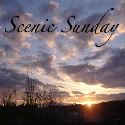I am back on Haida Gwaii after six weeks in Victoria, British Columbia doing training and housesitting. I have been to Victoria several times but only in the area of the Inner Harbour, the area the tourists visit. I knew of places like Esquimalt, Metchosin, Sooke and Port Renfrew but had never experienced them. What amazed me the most about the Greater Victoria area was their public transit system that lets you get to some pretty wild places for a mere $2.50 bus ride. One of these places was East Sooke Regional Park located on the extreme southwest tip of Vancouver Island and a beautiful 30 minute drive/ride from Victoria.
East Sooke Regional Park is the largest park in the Capital Regional District of Victoria covering 1422 hectares(3512 acres) of westcoast wilderness. There are over 50 km(30 miles) of trails through old homestead orchards(above) and farmland(below), dry bald moutain tops(didn't make it) with panoramic views and wild west coast trails(what this post is about!) that includes 10 km(6 miles) of permanently protected virgin coastline.
A friend and I entered the park at the old Aylard Farm homestead in search of the T'Sou-kes(pronounced Sooke) petroglyphs. We thought we had walked the whole ten kms of rugged coastline however if you notice on the map above we barely made a dent in the trail system(our route is marked in red)! It sure felt like 10 kms!
The vistas were breathtaking!
Isolated anchorage at Campbell Cove
It has been a cool spring but some flowers were in bloom.
The climbs were not always easy but the payoff was worth it...
Sometimes you got a surprise
and always a great view such as this one at Creyke Point
There are lots of beautiful pocket beaches(high tide) with crystal clear water,
air plants like "old man's beard" and the red barked Arbutus trees,
wind swept spruce and douglas fir
and amazing geology everywhere you looked.
Art created by nature!
Ring necked seal petroglyph "bruised" into the rock at Alldridge Point which was designated a Provincal Heritage site in 1927. There was a second petroglyph but I could not find it! These were "bruised" into the rock by the Coast Salish (the T'Sou-kes, prounounced Sooke) thousands of years ago and was a technique unique to the Strait of Juan du Fuca.
The power of mother nature was evident every where. Some of these stunted coastal pines were 300 years old!
The view across the Strait of Juan du Fuca at the Olympic Mountains of Washington State.
For other great places why not join us at

























































